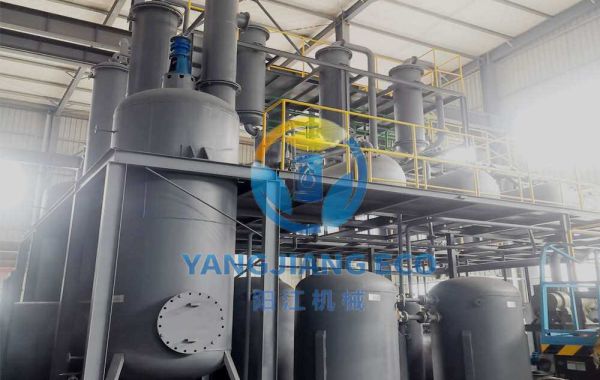Used oil distillation machines are essential for recycling waste oil into valuable products like diesel and base oils. However, like any industrial equipment, they are prone to mechanical failures that can disrupt operations. Understanding these common issues and knowing how to fix them can save time, money, and prevent costly downtime.
1. Clogged or Dirty Condensers
Problem:
Over time, condensers can accumulate sludge, carbon deposits, or wax buildup, reducing heat exchange efficiency. This leads to poor distillation performance and increased energy consumption.
Solution:
Regularly clean the condenser tubes using chemical solvents or mechanical brushing.
Install pre-filters to trap impurities before they reach the condenser.
Schedule routine maintenance to prevent severe clogging.
2. Heating System Failures
Problem:
The heating element or furnace may malfunction due to sediment buildup, electrical faults, or overheating. This can result in uneven heating or complete system shutdown.
Solution:
Inspect heating coils and replace damaged elements.
Ensure proper voltage supply and check for electrical faults.
Clean the heating chamber to remove carbon deposits.
3. Pump and Valve Leaks
Problem:
Pumps and valves in distillation machines can develop leaks due to worn seals, gasket degradation, or corrosion. Leaks reduce efficiency and pose safety hazards.
Solution:
Replace damaged seals and gaskets promptly.
Use corrosion-resistant materials for valves and pipes.
Conduct pressure tests to detect hidden leaks.
4. Vacuum System Issues
Problem:
A faulty vacuum pump or leaks in the vacuum system can prevent proper pressure control, leading to incomplete distillation and poor product quality.
Solution:
Check for air leaks in pipes and joints using a vacuum gauge.
Replace worn-out vacuum pump oil regularly.
Ensure all connections are airtight.
5. Temperature Control Failures
Problem:
Inaccurate temperature readings or control system malfunctions can cause overheating or insufficient heating, affecting distillation efficiency.
Solution:
Calibrate temperature sensors and controllers periodically.
Replace faulty thermocouples or control modules.
Install backup sensors for critical temperature zones.
6. Corrosion and Rust in the Distillation Chamber
Problem:
Exposure to acidic compounds and moisture can cause corrosion in the distillation chamber, leading to structural weakness and contamination of distilled products.
Solution:
Use stainless steel or corrosion-resistant alloys for critical parts.
Apply protective coatings to vulnerable areas.
Regularly inspect and clean the chamber to remove corrosive residues.
Preventive Maintenance Tips
To minimize mechanical failures:
Schedule regular inspections of key components.
Use high-quality replacement parts for repairs.
Train operators on proper machine handling and troubleshooting.
Monitor system performance with sensors and automation tools.
Conclusion
Used oil distillation machines are complex systems that require proper maintenance to operate efficiently. By identifying common mechanical failures early and applying the right fixes, operators can extend equipment lifespan, improve productivity, and ensure consistent output quality. Investing in preventive maintenance is always more cost-effective than dealing with unexpected breakdowns.







